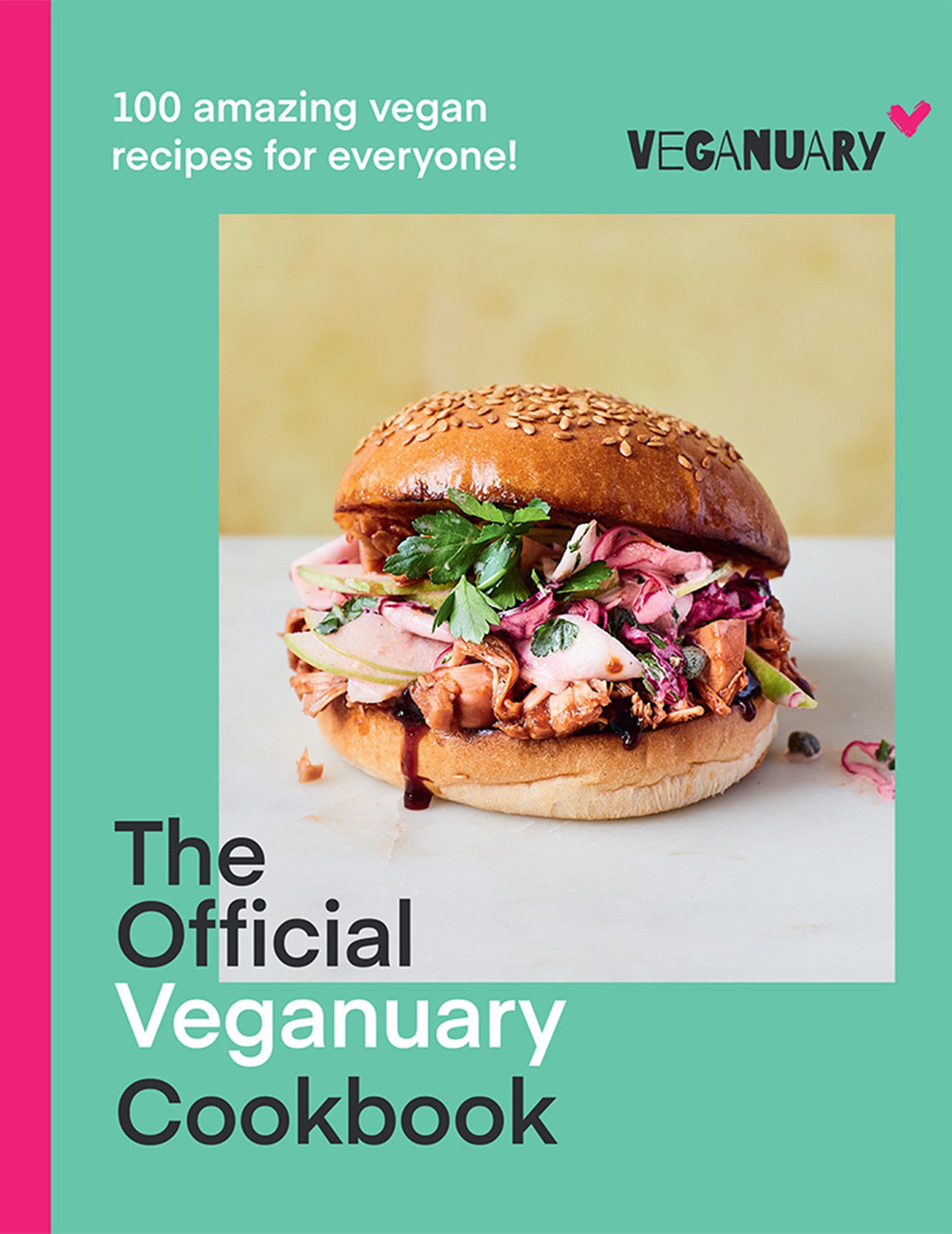Five tips for getting started with Veganuary
Compared to a decade ago, it’s much easier, cheaper and tastier to give up meat, fish and dairy. Lauren Taylor speaks to Veganuary’s Toni Vernelli about how to get started – and keep it up beyond January

Your support helps us to tell the story
From reproductive rights to climate change to Big Tech, The Independent is on the ground when the story is developing. Whether it's investigating the financials of Elon Musk's pro-Trump PAC or producing our latest documentary, 'The A Word', which shines a light on the American women fighting for reproductive rights, we know how important it is to parse out the facts from the messaging.
At such a critical moment in US history, we need reporters on the ground. Your donation allows us to keep sending journalists to speak to both sides of the story.
The Independent is trusted by Americans across the entire political spectrum. And unlike many other quality news outlets, we choose not to lock Americans out of our reporting and analysis with paywalls. We believe quality journalism should be available to everyone, paid for by those who can afford it.
Your support makes all the difference.January is a time for a health reset, new goals and… vegan food. Veganuary, an annual challenge run by a UK non-profit of the same name, is marking 10 years and celebrating millions taking part.
And while a decade ago, meat alternatives and vegan restaurants were less plentiful, these days it’s becoming much easier, cheaper and tastier to give up meat, fish and dairy.
“People are realising how much of what they already eat is vegan,” says Toni Vernelli, international head of policy and communications at Veganuary. “Things like dried pasta and baked beans, bread, so much of what we eat every day. And we’re a lot more comfortable eating Indian and Ethiopian and Japanese, much of that is vegan by default.”
Plus, perceptions are shifting. Vernelli, now 52, went meat-free at 19 (despite the fact her dad was a butcher) and for the first 10 years, “people found the concept quite mind-blowing – the idea you could exist [without meat] was quite a novel thing. People would say, I could never do it, it’s so extreme,” she recalls.
“Now, the attitude has completely changed, when people find out you’re vegan, they’ll say things like, ‘I’ve really cut back on the amount of meat I eat’, or, ‘I’ve tried the Greggs [vegan] sausage roll and it’s nice’, or, ‘I have oat milk in my coffee now’.
“They’re looking for ways to be similar to you, rather than [think] what you’re doing is so completely alien and weird.”
We all know that eating more plant-based food is better for the planet and animal welfare, as well as having plenty of health benefits, including promoting better sleep, energy and skin (“I often get comments that I look a lot younger than I am,” says Vernelli). But knowing the benefits is one thing, translating that to your plate every meal is another.

After all, culturally, it’s been ingrained in most of us to eat meat since we were children – and a lifelong habit is not easy to instantly break.
“In our society, we grow up eating meat, so we don’t even see that as animals, it’s just a sausage, or it’s a piece of bacon. And then once you get older and you realise, ‘Oh, that is an animal’, by then, your taste buds are used to it, you’ve got memories associated with those foods and traditions, and it makes it infinitely harder to stop,” says Vernelli.
Interestingly, although the majority of people say they are pro animal welfare and against factory farming (“95 per cent of animals are raised inside factory farms” in the UK, says Vernelli), only an estimated 2-3 per cent are vegan. So why is there such a disconnect between our values and what we choose to eat?
“It’s natural human behaviour,” says Vernelli. “That’s not putting blame on anyone, I’m not saying that’s a fault. I am against sweatshops, but every time I go shopping it’s not at the forefront of my mind. It doesn’t make me a bad person and it doesn’t mean that I’m deliberately betraying my values.
“I think it’s impossible to be a perfect person in an imperfect world, and always be leading 100 per cent ethical lives all the time.”
So the “challenge” of Veganuary is not about perfection and completing an entire animal-based produce-free month, but simply trying to introduce more vegan food – however it works for you. It could be “three vegan days in our household a week, or, I’ll be vegan before dinnertime, then eat with my family”, she says.

The charity has just released its first cookbook – The Official Veganuary Cookbook – packed with straight-forward, easy recipes. They’re “simple, healthy and very vegetable focused – because we didn’t want people to feel like they had to rely on a lot of the meat substitutes.” A few recipes include them, but not many.
Lots feel familiar, such as Thai green curry or mushroom bolognese, while others are more exciting; Brazilian sweet potato dough balls or peanut butter breakfast sundaes with banana ice cream.
Here are Vernelli’s top tips for trying veganism this January and beyond.
1. Don’t experiment too widely at first
“Start with familiar foods,” says Vernelli. “Have a shepherd’s pie or spag bol, instead of the meat use lentils, use a plant milk in the mash instead of cow’s milk, use a vegan butter, that sort of thing.”
2. Keep trying different plant-based alternatives
“Don’t try one type of plant milk or one type of vegan sausage and think, ‘That was gross, all plant milks are gross’, because there’s such a diversity out there. It’s personal preference so try different varieties and find one that works for you.
3. Be kind to yourself
“We all slip up, we all accidentally eat something not vegan or simply give into temptation and think, ‘I really want this milk chocolate bar right now’. [For some people] the minute they eat something non vegan, they’re like, ‘Well, I’ve failed at veganism now so I’ll just go back to having meat and dairy products at every meal’. No, you didn’t fail. You were a human being.”
“And we know that over 80 per cent of people who begin Veganuary, at least the ones who sign up through the website, don’t return to their full meat and diary-based diet afterwards.” Which is more impactful long term.
4. Shop around to save money
“I wouldn’t deny that some vegan products are more expensive [than the non-vegan versions], but there are other brands that aren’t. Richmond sausages do a vegan version at price parity with their meat-based ones. Discount retailers like Aldi and Lidl, their prices are phenomenal.
“[Lidl] Germany have just announced price parity policies on all of their vegan products so that they will never be more expensive,” she says. Plus, she adds: “Meat is expensive, a lot of consumers cut back on meat because of the cost.”
5. Stock up on cheap veg
“I’m such a big fan of frozen vegetables and I don’t think they get enough credit because some people are food snobs, but they’re frozen as soon as they’re picked so the nutrients are really fresh. [There’s frozen] broccoli, cauliflower, leeks, peppers, sliced cabbage, frozen spinach, Brussels sprouts, butternut squash, because I mean, who has the time to peel a butternut squash?
“And things like legumes, tins of chickpeas, baked beans – cheap as chips – and chips!”
For recipes, meal planning and more tips, sign up for Veganuary at veganuary.com.
‘The Official Veganuary Cookbook’ by Veganuary (HarperNonFiction, £22).
Join our commenting forum
Join thought-provoking conversations, follow other Independent readers and see their replies
Comments